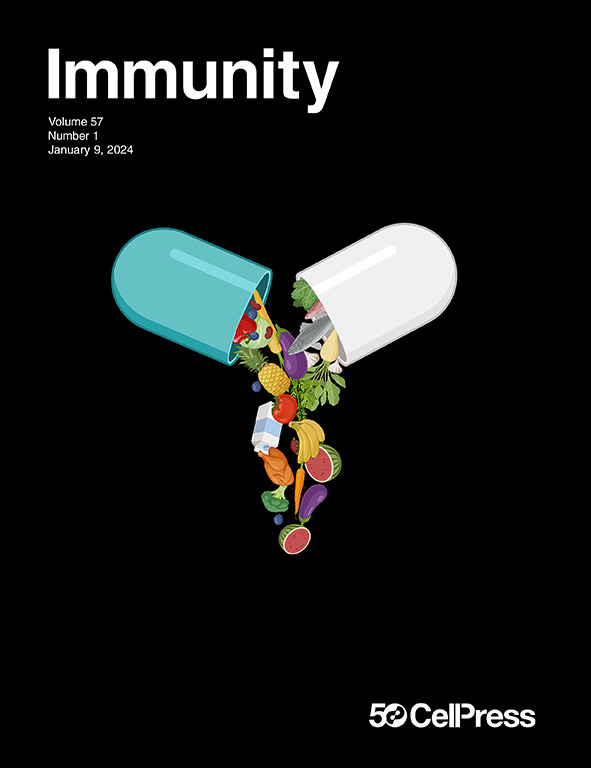Amyloid-β induces lipid droplet-mediated microglial dysfunction via the enzyme DGAT2 in Alzheimer’s disease
IF 26.3
1区 医学
Q1 IMMUNOLOGY
引用次数: 0
Abstract
Microglial phagocytosis genes have been linked to increased risk for Alzheimer’s disease (AD), but the mechanisms translating genetic association to cellular dysfunction remain unknown. Here, we showed that microglia formed lipid droplets (LDs) upon amyloid-β (Aβ) exposure and that LD loads increased with proximity to amyloid plaques in brains from individuals with AD and the 5xFAD mouse model. LD-laden microglia exhibited defects in Aβ phagocytosis, and unbiased lipidomic analyses identified a parallel decrease in free fatty acids (FFAs) and increase in triacylglycerols (TGs) as the key metabolic transition underlying LD formation. Diacylglycerol O-acyltransferase 2 (DGAT2)—a key enzyme that converts FFAs to TGs—promoted microglial LD formation and was increased in mouse 5xFAD and human AD brains. Pharmacologically targeting DGAT2 improved microglial uptake of Aβ and reduced plaque load and neuronal damage in 5xFAD mice. These findings identify a lipid-mediated mechanism underlying microglial dysfunction that could become a therapeutic target for AD.

淀粉样蛋白-β通过DGAT2酶诱导脂滴介导的小胶质细胞功能障碍
小胶质细胞吞噬基因与阿尔茨海默病(AD)风险增加有关,但将遗传关联转化为细胞功能障碍的机制尚不清楚。在这里,我们发现小胶质细胞在淀粉样蛋白-β (Aβ)暴露后形成脂滴(LD),并且LD负荷随着AD个体和5xFAD小鼠模型中淀粉样蛋白斑块的接近而增加。负载LD的小胶质细胞表现出a β吞噬缺陷,无偏倚脂质组学分析发现,游离脂肪酸(FFAs)的减少和三酰甘油(TGs)的增加是LD形成的关键代谢转变。二酰基甘油o -酰基转移酶2 (DGAT2) -一种将FFAs转化为tgs的关键酶-促进小胶质细胞LD形成,并在小鼠5xFAD和人AD脑中增加。药理学上靶向DGAT2可改善5xFAD小鼠小胶质细胞对Aβ的摄取,减少斑块负荷和神经元损伤。这些发现确定了一种脂质介导的小胶质细胞功能障碍机制,可能成为阿尔茨海默病的治疗靶点。
本文章由计算机程序翻译,如有差异,请以英文原文为准。
求助全文
约1分钟内获得全文
求助全文
来源期刊

Immunity
医学-免疫学
CiteScore
49.40
自引率
2.20%
发文量
205
审稿时长
6 months
期刊介绍:
Immunity is a publication that focuses on publishing significant advancements in research related to immunology. We encourage the submission of studies that offer groundbreaking immunological discoveries, whether at the molecular, cellular, or whole organism level. Topics of interest encompass a wide range, such as cancer, infectious diseases, neuroimmunology, autoimmune diseases, allergies, mucosal immunity, metabolic diseases, and homeostasis.
 求助内容:
求助内容: 应助结果提醒方式:
应助结果提醒方式:


